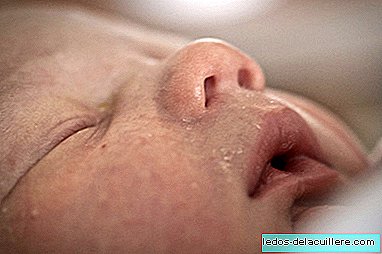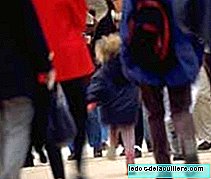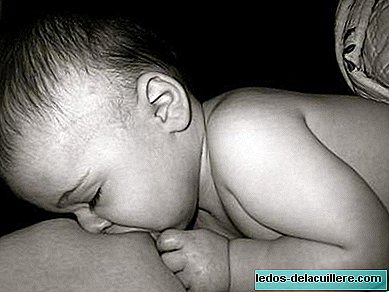
When a couple explains that they have just had a baby, there is always someone who asks them how the birth was and how the mother and the baby are, because they assume that there may be problems in childbirth and that either the mother or the baby may suffer some consequence
It is true that there are fewer and fewer problems arising from childbirth, however babies are still relatively fragile and therefore are exposed to suffer some injuries arising, either from the same birth, or from the interventions and maneuvers of birth attendants Let's explain what are the most common injuries babies suffer during childbirth.
The most common injuries of babies during childbirth
A few years ago, members of the Pediatric Surgery and Neonatology Services of the Gregorio Marañón University Children's Hospital in Madrid carried out a study entitled "Obstetric trauma, a current problem?", In which they counted the number of injuries suffered by babies born between 1993 and 1998. In total 21,375 babies were born and accounted for 309 injuries in 303 babies (1.44% of the babies suffered an injury).
These injuries are broken down as follows:
- 107 clavicle fractures (50% of them were associated with vaginal delivery with a cephalic presentation): it is a lesion that generally has a good prognosis. The only precaution is to be careful when dressing, picking and feeding, because depending on how it is done it can hurt.
- 105 cephalohematomas (51% was associated with the use of forceps): it is an inflammation that occurs under the scalp, which looks like a bump, but is really soft. It is associated with the use of instruments during childbirth, although it may also be due to pressure from the uterus and vaginal wall. It is an injury that usually resolves itself over the weeks.
- 25 facial paralysis: An excess of intrauterine pressure or the use of forceps can cause a pinch of some of the facial nerves. If there is no nerve break, the lesion resolves on its own in the first weeks after delivery.
- 25 brachial paralysis (44% was associated with vaginal delivery and 36% with the use of forceps): it is associated with children with high weight and the use of instrumental maneuvers during childbirth. An injury to the nerves of the brachial plexus occurs that causes loss of movement in the arm. It may require a lot of family support and a lot of rehabilitation and early detection and the start of rehabilitation as soon as possible is important.
- 16 parietal fractures.
- 11 subdural hemorrhages.
- 10 different fractures.
- 8 incisocontusal wounds.
- 2 hepatic subcapsular hematomas.
Risk factor's
Some of the causes I have already mentioned in brackets, but it may be interesting to comment on the associated risk factors:
- High birth weight: the birth of babies weighing more than 3,400 kg. it is, as a general rule, more prolonged and is said to require, more frequently, traction maneuvers. This can be relatively debatable because, speaking of births between 15 and 20 years ago, it is more than likely that most were given while the mother was in a lithotomy position (lying with her legs raised). I say this because the most advisable thing is, as we have said on other occasions, that the woman is in an upright position to take advantage of the force of gravity, something that can reach a force on the baby similar to that exerted when “ pull ”him with a forceps.
- Type of delivery: births that last longer, those in which the baby is poorly placed and in general all those that require more intervention by professionals are more likely to cause some type of injury to the baby.
- Need for resuscitation: If it is observed that a baby is suffering during childbirth and childbirth should be accelerated it is more possible that the baby will be harmed with more energetic maneuvers than usual or with resuscitation maneuvers if the baby has already been born.












